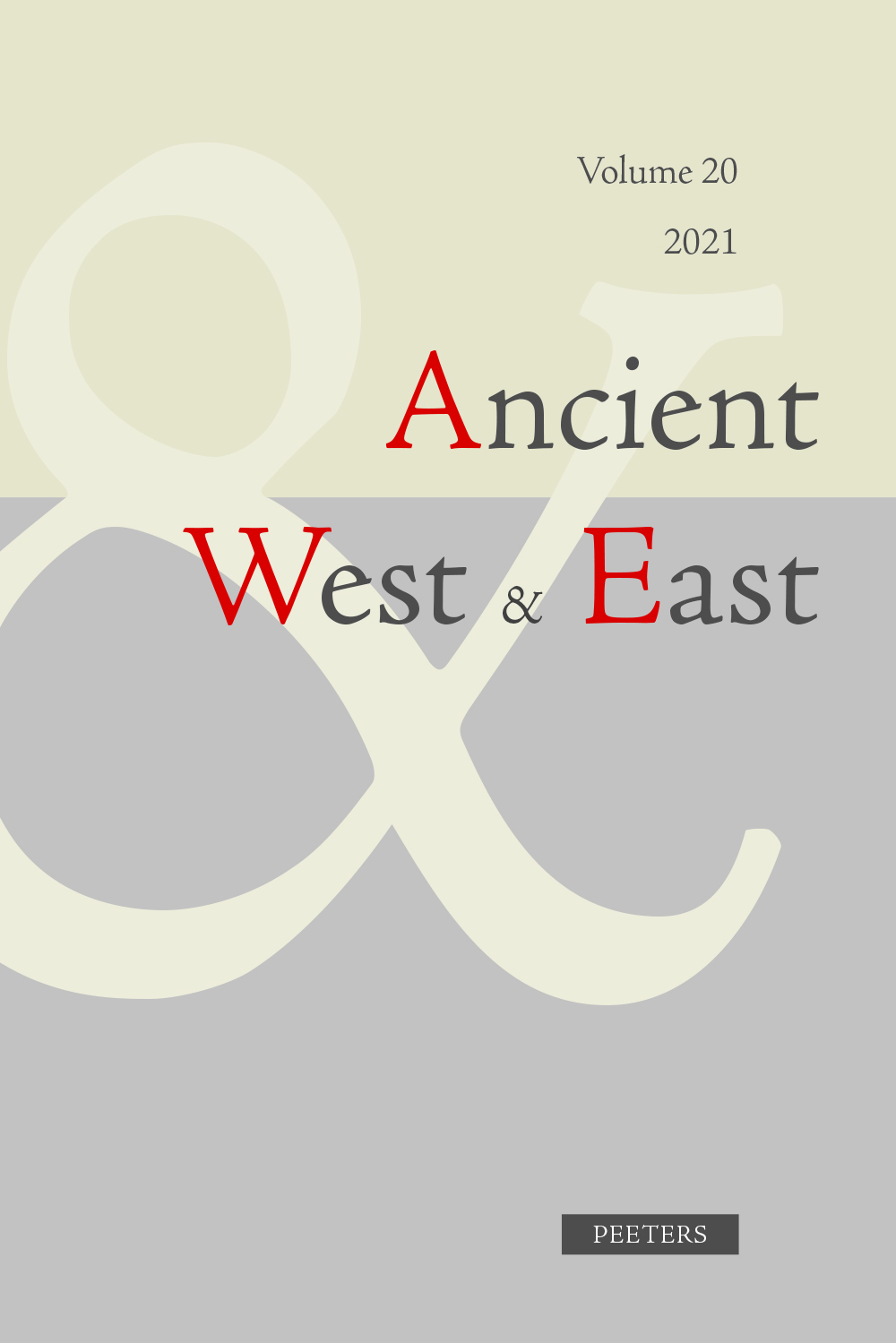 previous article in this issue previous article in this issue | next article in this issue  |

Preview first page |
Document Details : Title: Some Observations on the Socio-Economic Structure and Ethnic Make-up of the Central Black Sea Region of Turkey during the Iron Age in the Light of New Evidence Author(s): DÖNMEZ, Şevket Journal: Ancient West & East Volume: 5 Issue: 1-2 Date: 2006 Pages: 13-43 DOI: 10.2143/AWE.5.1.3291739 Abstract : The Iron Age civilisations of Western and Central Anatolia were established in the ‘Dark Age’. During this period the region faced Thraco-Phrygian immigration. The Phrygian kingdom was established as a result of these migrations and of the Eurasian nomadic warriors, such as the Cimmerians and Scythians, who entered Anatolia from Transcaucasia a few centuries after the Dark Age and ransacked it. At the end of the 12th century BC a new political power, made up of Hurrian ethnic groups and later to be called Diauehi by the Urartians, emerged in the Turkish Eastern Black Sea region. This group prevented the Urartians from entering the region. Three more ethno-political groups of Iron Age Central Anatolia are known from Assyrian sources: the Mushki/Mushkhi, Kashka/Kashku/Kaska/Kasku/Gashka/Gashku and Tabal. Even though we have a general idea about the lands where these people lived, we have not determined where its northern borders lie. Phrygians established political authority. To a great extent they had become cut off from the culture of south-eastern Europe and became an important part of Anatolian culture. But it would not be appropriate to attribute to Phrygian culture archaeological finds from other regions that resemble them just because of political authority, or to suggest definite and unidirectional cultural influence. Thus, it would be incorrect to attribute the Iron Age culture of the Central Black Sea region to the Phrygians or the Hellenes. For example, the paralles to the defensive architecture of Akalan are to be found at Kerkenes Dağ in Anatolia, not in Greek or Phrygian cities. The region’s local pottery also closely resembles the Iron Age pottery of the Kızılırmak/Halys Bend region. Hence, it would be more correct to suggest that the people of the Central Black Sea region either came from, or were influenced by, Central Anatolia. |
|


